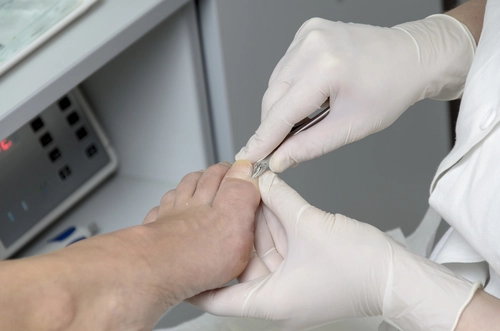
If you are planning on reporting routine foot care for diabetic patients suffering from peripheral neuropathy with loss of protective sensation (LOPS), you should be aware that Medicare pays for this service, albeit with riders.
You can ensure that you receive deserved reimbursement for this service by following these three handy tips while handling diabetic neuropathy care claims.
1. Choose the Right Procedure Codes
Diabetic neuropathy is a common complication of diabetes and causes nerve damage that prevents you from feeling sensations such as pain, especially in the peripheral organs such as the feet and hands. This loss of foot sensation is very dangerous as it increases a patient’s risk of foot injuries. Moreover, due to lack of sensation,the patient may not become aware of injuries and sores on the feet until very late. This is all believed to be related to blood sugar being too high for a long period of time.
Medicare has recognized the seriousness of the condition and provides coverage for routine foot care of diabetic patients diagnosed with sensory neuropathy and LOPS. Common examples of covered services are:
Your clinician can perform these services in the office, outpatient setting, or the beneficiary’s home. Usually, Medicare may not pay for treatment of flat feet or treatment of subluxation of the foot, and you should consult your local Medicare administrative contractor before billing.
You have a choice of these G codes to report these encounters:
You also have the following CPT® codes that can be used for routine foot care of diabetic patients:
Beware: According to The Centers for Medicare and Medicaid Services (CMS) and its National Correct Coding Initiative (CCI) edits, you should consider G0245 a part of an E/M code, which means, for example, that you can’t claim reimbursement for both G0245 and an office/outpatient E/M code (99201-99215) for the same date of service as they are bundled together. The modifier indicator for these edits is ‘0,’ which means you cannot override them with a modifier. Also, usually there should be a day’s gap between the initial visit code G0245 and any other foot care service code as your physician should first confirm and document the diagnosis of diabetic sensory neuropathy resulting in a LOPS before billing for foot care.
LOPS can be diagnosed through sensory testing with the 5.07 Semmes-Weinstein monofilament. The physician should test five random sites on the plantar surface of each foot, according to the National Institute of Diabetes and Digestive and Kidney Diseases guidelines. As suggested by the American Podiatric Medicine Association, an absence of sensation at two or more sites out of five tested on either foot is mandatory and should be documented to diagnose LOPS. According to CMS, the primary care physician should examine other causes of peripheral neuropathy prior to initiating or referring for foot care for persons with LOPS.
After the diagnosis is established, however, you can claim reimbursement for a physician or group practice only once for G0245. If your patient has visited another physician for his condition, you may bill for G0245 if neither G0245 nor G0246 has been billed for that patient in the previous 6 months.
2. Match Your Services with Detailed Documentation
If your payer decides to audit your diabetic neuropathy routine foot care claims, you may end up having to pay back a portion of your reimbursement if your clinician’s documentation doesn’t meet certain documentation requirements.
To avoid auditing issues, make sure that the medical record contains the patient’s medical history that indicates he has diabetic neuropathy. Your internist’s documentation of the physical examination should include all of the following:
Don’t overlook: Be sure your practice documents in the patient’s chart which MD or DO certified the “systemic condition.” Your clinician should also be sure to document the date of the patient’s most recent visit with a physician for foot care within the last six months.
Here’s why: Medicare coverage entitles individuals with a documented diagnosis of diabetic sensory neuropathy and LOPS to an evaluation and treatment of the feet once every six months for as long as the patient has not seen a foot care specialist in the interim. Make sure that your clinician asks the patient if he has received any type of foot care in the past six months. If the patient isn’t sure, have him sign an advance beneficiary notice (ABN) before providing care.
3. Back Up Your Claims with Perfect Diagnostic codes
Various Medicare administrators have their own lists of approved primary diagnostic codes for covering foot care. Please check individual payers before reporting the codes, however, some universally accepted codes may be:
